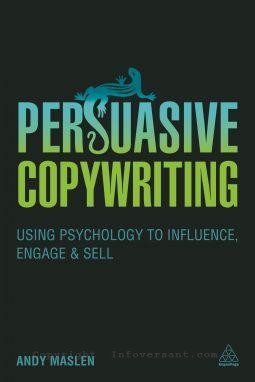Content is key to a business’ success. The content you create on your blog, in advertising, your emails, and social media, influences how many new leads your business earns. Earlier, it was limited to the advertising copy in the newspaper or the flyers that you got in your mail box and newspapers. Today, when most of the people are interacting, using, creating, and sharing information all the time, your copy has gained much more importance.
With falling attention spans and rising volume of information, the competition to get noticed has increased exponentially. In Persuasive Copywriting: Using Psychology to Influence, Engage and Sell, Andy Maslen talks about what captures the readers’ attention and how to channel that attention to get the results you want.
Andy Maslen has over two decades of copywriting experience. His agency, Sunfish, has written for organizations like The Economist and is one of the leading copywriters in the UK. He is also the author of Write to Sell: The Ultimate Guide to Great Copywriting and The Copywriting Sourcebook: How to Write Better Copy, Faster – For Everything from Ads to Websites.
 Persuasive Copywriting: Using Psychology to Influence, Engage and Sell
Persuasive Copywriting: Using Psychology to Influence, Engage and Sell
Pages: 256 Publisher: Kogan Page; 1 edition (March 28, 2015) Language: English ISBN-10: 0749473991, 978-0749473990
In Persuasive Copywriting, Andy Maslen tells his readers that emotions are the key to persuasive writing. His argument is that most B2B communications focus on the logic of the arguments while writing the sales material. However, emotions trump logical arguments, in his experience. Emotions, he claims, hijack the persons logical abilities and help the writer create the perspective that the reader adopts. He stresses that copywriters can use this inherent system to put the reader in the right frame of mind before making the pitch.
As against many similar books, the author gives various examples to show how to frame sentences, and shares common phrases that trigger the emotions that the writer wants the reader in while reading the pitch. Apart from examples and theory, the author provides exercises or prompts for writers to practise their skills at triggering emotions through copy.
Copywriting is hard. It takes a lot of practice and failures to find out what clicks in different situations. Persuasive Copywriting gives new and experienced writers the tools to do away with the early failures. Using the important devices in the book, writers can start successful campaigns from the beginning.